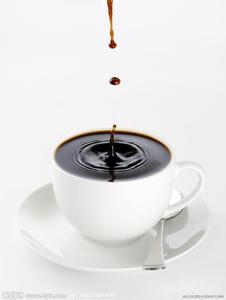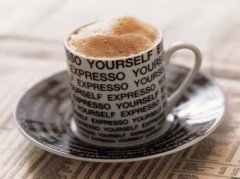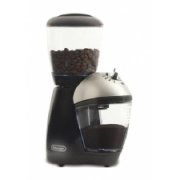Coffee roasting equipment type and roasting degree Coffee beans roasting knowledge

Coffee roasted Coffee Roasting coffee is popular mainly because of the aroma formed after roasting and the taste when drinking. The coffee raw bean itself does not have any special taste, it is roasted to completely change and reorganize the substances inside the raw bean to form a new structure, thus bringing out the mellow flavor of the coffee.
The baking tools, the roaster, are divided into three types: direct fire, semi-hot air direct fire and hot air. At present, the latter two are the mainstream.
Direct fire: the earliest baking tool used by human beings. Disadvantages: slow heat conduction of iron; long baking time; waste of hot gas; raw beans contact with the drum wall for too long, easy to be scorched, resulting in bitter and scorched taste; debris in and out of the tube attached to the surface of coffee beans will make the flavor turbid.
Semi-hot air direct fire: improved and manufactured by Van Gupen, a German from 1870 to 1920. In 1907, the German Perfect roaster began to use this concept, using gas heating, and there is a fan, half of the hot air into the drum, half to the outer heating drum. So far, the German Probat drum roaster is famous all over the world. In addition, Diedrich of Idaho took the lead in using gas-activated infrared heat source (Gas-Infrared) in 1987 to make temperature control more accurate and become the number one brand in North America.
Semi-hot air direct type, directly heat the drum with the fire source, and bring the hot air into the drum at the same time, increase the heating speed, and blow away the debris, so a balanced and clean coffee bean is produced.
Hot air, a pioneering work of the 20th century, uses hot air to bake coffee beans to improve roasting efficiency. In 1934, the Thermonro roaster (Jabez Burns Thermalo), a large hot air roaster, was made by the Bourne Company in the United States.
The flow-bed roaster (Fluid-Bed Roaster) blows the raw beans with hot air and makes them fly up and down. In 1976, Michael, an American. Michael Sivetz designed a flow-bed roaster. Eon, a well-known Australian coffee expert. Ian Bersten also designed and manufactured fluidized bed roasters. When using this roaster, the coffee beans fall after being blown to the high point and are roasted by hot air again, which can make the coffee beans roast evenly. However, the lack of metal drum smoldering, some people think that the lack of a taste.
Coffee roasting is a process of high temperature decomposition (Pyrolysis), which completely changes the substance inside the raw bean, produces new compounds, and recombines to form aroma and mellow flavor. This effect only happens at high temperatures.
In fact, in the coffee processing process, baking is the most difficult step, it is a kind of science, but also a kind of art. The baking process is divided into three stages:
Dehydration, in the early stage of baking, raw beans begin to absorb heat, and the water inside gradually evaporates. At this time, the color gradually changed from cyan to yellow or light brown, the silver skin began to fall off, and the faint smell of grass could be smelled. The main function of this stage is to remove moisture, which accounts for about half of the baking time. Because water is a good conductor of heat transfer, it helps to bake the internal substance of coffee beans. Therefore, although the aim is to remove water, the baker will make good use of the temperature of the water and control it properly so that it will not evaporate too quickly.
Decompose at high temperature, bake to about 160 degrees, the water inside the beans will evaporate into gas, and begin to remove the outside of the coffee beans. At this time, the interior of the raw bean changed from endothermic (Endothermic) to exothermic (Exdothermic), and the first burst sound appeared. After the first burst, it turns to endothermic again, and the internal pressure of the coffee bean is extremely high, up to 25 atmospheric pressure. Heat and pressure begin to deconstruct the original tissue to form new compounds that create the taste and taste of coffee. When it reaches about 190 degrees, the conversion between endothermic and exothermic occurs again. Of course, high temperature cracking continues to occur, coffee beans from brown to dark brown, gradually into the stage of heavy roasting.
Cooling (Quenching), coffee should be cooled immediately after roasting, quickly stop the high temperature cracking, and lock the flavor. Otherwise, the high temperature in the beans will continue to act and will burn off the aromatic substances. There are two cooling methods, one is air-cooled, the other is water-cooled. The air-cooled type is slow, but it is clean and does not pollute, and it can retain the mellow flavor of coffee, so it is used for fine coffee. Water-cooled coffee beans are sprayed with a layer of water mist on the surface of coffee beans, causing the temperature to drop rapidly, requiring precise calculation, and increasing the weight of roasted coffee beans, generally used in commercial coffee roasting.
Burst sound, raw beans from endothermic to exothermic, the internal substances out of the body, will form an obvious sound. The first time is louder, crisp and scattered, and the second is quiet, meticulous and concentrated. Because of the high correlation between bursting sound and temperature, it can fully represent the drying temperature, which is an important basis for bakers to judge the baking degree.
The changes caused by baking are very complicated, and although scientists continue to study and analyze them, they are still unable to get a full picture.
There are roughly the following changes: weightlessness: the moisture content is reduced from about 13% to 1%, and the weightlessness is about 12% to 21%. The higher the baking degree, the more weightlessness. Volume expansion: after baking, the volume of coffee beans will increase by more than 60%. Pore enlargement: the cell wall of raw bean is hard and the cell is empty and locked, so it is not easy to deteriorate. But after baking, the cell wall becomes fragile, the pores are enlarged, and it is easy to lose internal material. Formation of carbon dioxide: high temperature decomposition causes the carbohydrates inside the coffee bean to decompose and combine with other substances to form a large amount of carbon dioxide, which resides inside the coffee bean. Change the organizational structure: after baking, carbohydrates dropped sharply from 58.9% to 38.3%, and acids (fatty acids, tannins, chloric acid, etc.) decreased from 8.0% to 4.9%. Under the action of high temperature pyrolysis, these substances are reorganized and transformed into caramel, carbon dioxide and some volatile substances. Among them, caramel accounts for 25% of the quality of roasted beans, forming the sweet taste of coffee. Fat accounts for 16.2% of raw beans and increases to 17% after baking, which is the source of mellow taste and consistency. Caffeine levels barely changed. The bitterness of heavy-roasted coffee is not due to more caffeine. Baking degree, Pacific region differentiation method: Light Roast (shallow baking): also has the smell of grass, no aroma and mellow flavor.
Cinnamon Roast (cinnamon baking): coffee beans turn cinnamon
Medium Roast (medium baking): has a strong sour taste.
City Roast (High Color Baking): sour, bitter and sweet begin to strike a balance.
City + Roast (city baking): baked to the first burst, just about to enter the second burst.
Full City Roast (city-wide roasting): roasting until the second burst is in progress, is a favorite of select coffee roasters.
French Roast (French baking): very bitter.
Italian Roast (Italian roasting): the raw material of Italian espresso.
The American Fine Coffee Association (SCAA) determines and analyzes the color of coffee and the degree of caramel coking by Elon instrument (measuring the color of coffee by infrared ray). Set black to 0 and white to 100, which is divided into 8 equal parts, representing 8 baking levels.
The roasting of fine coffee is different from that of commercial coffee: the roasting method is determined according to the properties of coffee beans (moisture content, hardness, year, and tested by sample cup).
Small amount of baking
The baker looks after the whole process during the baking process (pay attention to the change of temperature and time, listen to the popping sound and observe the change of color and luster)
Immediate delivery after baking (Deliver at The Same Day Of Roasting).
(this article is reprinted)
Important Notice :
前街咖啡 FrontStreet Coffee has moved to new addredd:
FrontStreet Coffee Address: 315,Donghua East Road,GuangZhou
Tel:020 38364473
- Prev

The time to grind coffee beans before brewing coffee
In order to enjoy the best taste of coffee, the easiest way is to buy freshly roasted coffee beans and grind them every time you need to make coffee. If you buy coffee beans and grind them in the store, you should let the clerk know what kind of coffee machine you use at home, piston coffee maker, drip coffee maker or Italian coffee maker. Because different coffee machines need to be used
- Next

Selection and purchase of Household small Bean Mill use of Household Bean Mill
In addition to considering the appearance and style and workmanship, the purchase of a household small bean grinder should also focus on the quality of the inner core steel of the first bean mill, the speed of the second grinding bean, the uniformity of the third thickness, and whether the thickness of the ground coffee powder can be adjusted. It is recommended not to buy a propeller bean grinder (that is, a bean grinder with two blades driven by an electric motor). It is actually not a bean grinder, but a bean chopper. Its
Related
- Detailed explanation of Jadeite planting Land in Panamanian Jadeite Manor introduction to the grading system of Jadeite competitive bidding, Red bid, Green bid and Rose Summer
- Story of Coffee planting in Brenka region of Costa Rica Stonehenge Manor anaerobic heavy honey treatment of flavor mouth
- What's on the barrel of Blue Mountain Coffee beans?
- Can American coffee also pull flowers? How to use hot American style to pull out a good-looking pattern?
- Can you make a cold extract with coffee beans? What is the right proportion for cold-extracted coffee formula?
- Indonesian PWN Gold Mandrine Coffee Origin Features Flavor How to Chong? Mandolin coffee is American.
- A brief introduction to the flavor characteristics of Brazilian yellow bourbon coffee beans
- What is the effect of different water quality on the flavor of cold-extracted coffee? What kind of water is best for brewing coffee?
- Why do you think of Rose Summer whenever you mention Panamanian coffee?
- Introduction to the characteristics of authentic blue mountain coffee bean producing areas? What is the CIB Coffee Authority in Jamaica?

